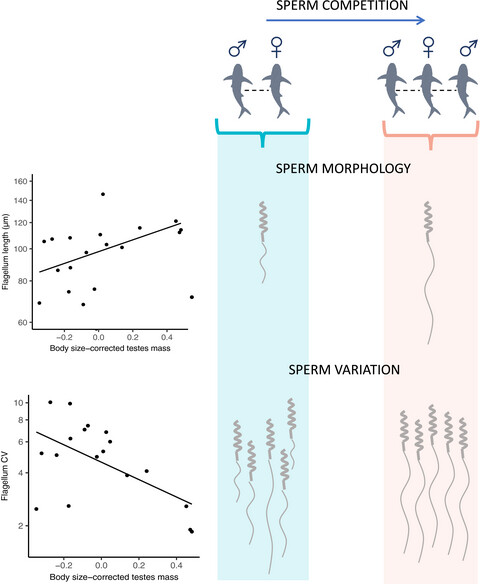Journal list menu
Export Citations
Download PDFs
2020
Attractive male sticklebacks carry more oxidative DNA damage in the soma and germline
- First Published: 14 October 2019
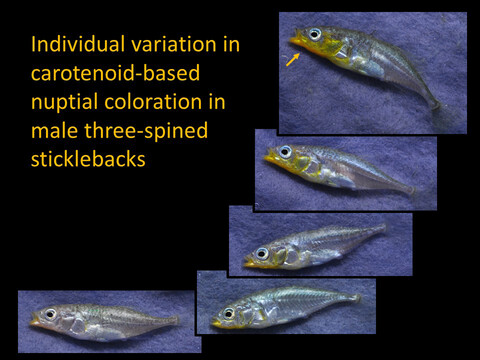
It is generally thought that secondary sexual signals are honest signals of phenotypic and genetic quality. We show that in the three-spined stickleback, however, males investing more in carotenoid-based red coloration carry higher levels of oxidative DNA damage in muscle, testis and sperm possibly due to the competing functions of carotenoids as colorants and antioxidants.
2019
Sperm competitive advantage of a rare mitochondrial haplogroup linked to differential expression of mitochondrial oxidative phosphorylation genes
- First Published: 08 September 2019
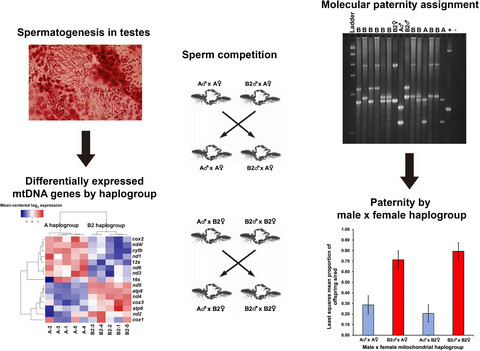
In central Panamanian populations of the harlequin beetle riding pseudoscorpion, Cordylochernes scorpioides, males carrying highly divergent mitochondrial haplogroups (A and B2) differ extensively in the expression of mtDNA genes in testicular tissue. DNA profiling demonstrates that B2-carrying males sire more than three times as many offspring in two-male sperm competition experiments than do A males, and this B2 competitive advantage cannot be explained by female mitochondrial haplogroup or male nuclear genetic background. Despite conferring strong fitness benefits on males, the B2 haplogroup remains rare in central Panamá as a consequence of male inability to transmit mitochondria to offspring (mother's curse).
Greater opportunities for sexual selection in male than in female obligate brood parasitic birds
- First Published: 30 September 2019
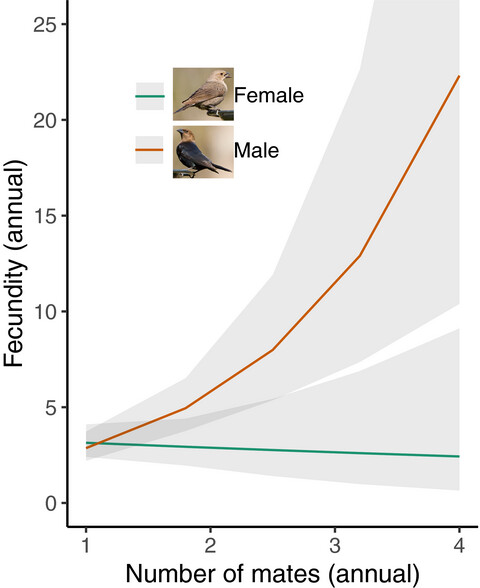
Bateman’s Paradigm predicts reproductive success and the number of mates is positive for males but not for females, resulting in more intense sexual selection on males vs. females. Many studies fail to corroborate this paradigm, potentially due to parental care. We show that in brood parasitic brown-headed cowbirds (Molothrus ater), which lack parental care in either sex, annual reproductive success increases with the number of mates in males, but not in females; conforming to predictions of the Bateman’s Paradigm. Photo: Marie Read.
Sexual selection and the evolution of sperm morphology in sharks
- First Published: 28 June 2019
The evolution of female genitalia
- First Published: 03 July 2019
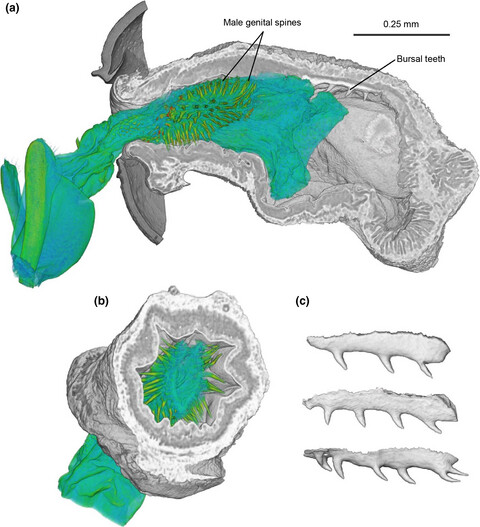
Female genitalia have been largely neglected in studies of genital evolution, perhaps due to the long standing belief that they are relatively invariable and therefore taxonomically and evolutionarily uninformative in comparison to male genitalia. Contemporarry studies dispute this point of view, and in this review we synthesise current evidence both for and against sexual selection acting as a driver of female genital evolution. Lastly, we offer directions for future studies in order to expand and refine our knowledge surrounding female genital evolution.
Science policies: How should science funding be allocated? An evolutionary biologists’ perspective
- First Published: 18 June 2019
Terrestriality constrains salamander limb diversification: Implications for the evolution of pentadactyly
- First Published: 19 March 2019
Males from populations with higher competitive mating success produce sons with lower fitness
- First Published: 27 February 2019
Weak premating isolation between Clitarchus stick insect species despite divergent male and female genital morphology
- First Published: 06 February 2019
Rapid evolution of testis size relative to sperm morphology suggests that post-copulatory selection targets sperm number in Anolis lizards
- First Published: 19 January 2019
Sexually dimorphic gene expression and transcriptome evolution provide mixed evidence for a fast-Z effect in Heliconius
- First Published: 06 December 2018
Developmental stress and telomere dynamics in a genetically polymorphic species
- First Published: 11 November 2018
Herbivores and plant defences affect selection on plant reproductive traits more strongly than pollinators
- First Published: 19 October 2018
2018
Predation risk determines pigmentation phenotype in nuthatches by melanin-related gene expression effects
- First Published: 26 September 2018
Eyes Wide Shut: the impact of dim-light vision on neural investment in marine teleosts
- First Published: 28 May 2018
An empirical test for a zone of canalization in thermal reaction norms
- First Published: 27 April 2018
Trait differentiation and adaptation of plants along elevation gradients
- First Published: 08 March 2018
Environmental and genetic control of cold tolerance in the Glanville fritillary butterfly
- First Published: 09 February 2018
Dynamic sex chromosomes in Old World chameleons (Squamata: Chamaeleonidae)
- First Published: 18 January 2018




